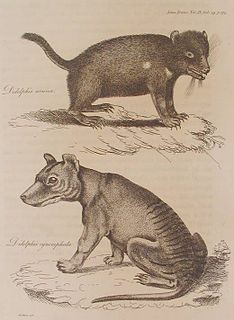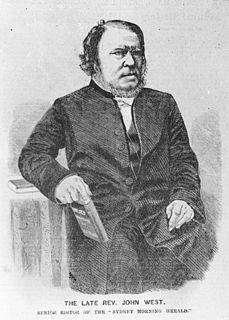
John Pascoe Fawkner was an early Australian pioneer, businessman and politician of Melbourne, Australia. In 1835 he financed a party of free settlers from Van Diemen's Land, to sail to the mainland in his ship, Enterprize. Fawkner's party sailed to Port Phillip and up the Yarra River to found a settlement which became the city of Melbourne.

Jørgen Jørgensen was a Danish adventurer during the Age of Revolution. During the Action of 2 March 1808 his ship was captured by the British. In 1809 he sailed to Iceland, declared the country independent from Denmark and pronounced himself its ruler. He intended to found a new republic following the United States and the French First Republic. He was also a prolific writer of letters, papers, pamphlets and newspaper articles covering a wide variety of subjects, and for a period was an associate of the famous botanists Joseph Banks and William Jackson Hooker. He left over a hundred written autographs and drawings, most of which are collected in the British Library. Marcus Clarke referred to Jørgensen as "a singularly accomplished fortune wooer—one of the most interesting human comets recorded in history".

George Prideaux Robert Harris (1775–1810) was the deputy surveyor in the early days of Van Diemen's Land, Australia, from settlement in 1803 until his death in Hobart Town in 1810. He was also an explorer, artist and naturalist who described many of the plants and marsupials native to the Island, including the Tasmanian devil and the thylacine.

John Helder Wedge was a surveyor, explorer and politician in Van Diemen's Land.
William Effingham Lawrence (1781–1841) was an English colonist to Australia, the son of Captain Effingham Lawrence, a merchant with houses in London, Liverpool and New York City. Previous generations of Lawrences had settled in the American colonies but returned to England after the War of Independence. Lawrence was an educated and refined man, an intimate of Jeremy Bentham, who was obliged to migrate to the colony of Van Diemen’s Land due to poor health. On his leaving England Bentham wrote to a friend in Rio de Janeiro: ‘Our excellent friend on his way to Australia is not without thoughts of touching at Rio de Janeiro: a worthier man, a more benevolent cosmopolite, never left any country; and very few better informed or more intelligent’.

Ronald Campbell Gunn, FRS, was a South African-born Australian botanist and politician.
Charles Swanston merchant, banker and politician was a financial backer of the Port Phillip Association. He was born in Mordington, Berwickshire, Scotland the son of Robert and Rebecca Swanston. At 16 he was commissioned a lieutenant in the private army of the British East India Company.

John Bede Polding, OSB was the first Roman Catholic Bishop and then Archbishop of Sydney, Australia.

The Rev. John West emigrated from England to Van Diemen's Land in 1838 as a Colonial missionary, and became pastor of an Independent (Congregational) Chapel in Launceston's St. John's Square. He also co-founded The Examiner newspaper in 1842 and was later editor of the Sydney Morning Herald.
Edward Micklethwaite Curr was an Australian pastoralist, author, aboriginal advocate and squatter.
David Burn was a Tasmanian pioneer and dramatist, author of the first Australian drama to be performed on stage, The Bushrangers.
Edward Abbott was a soldier, politician, judge-advocate and public servant who served at Parramatta, the Hawkesbury River and Norfolk Island in the colony of New South Wales, now part of present-day Australia. He also served at the settlements of Launceston and Hobart in Van Diemen's Land, which was part of New South Wales until 1825, when Van Diemen's Land became a self-governing colony.
Edward Dumaresq was a landowner, magistrate and acted as Surveyor General of Van Diemen's Land.
James Erskine Calder was a Surveyor General of the Colony of Tasmania, now an Australian state.
James Sprent was a Surveyor General of Tasmania,.
Henry James Emmett (1782–1848) was an English born public servant. He was in the War Office in England for seven years before emigrating to Van Diemen's Land in 1819 where he filled a number of roles in government. He and his family travelled on the Regalia the first passenger ship to Van Dieman's Land, arriving on 30 November 1819.
The Giblin family of Tasmania was an influential family in the early days of the colony of Tasmania, or Van Diemen's Land as it was earlier named. The list below is not exhaustive, but should help in establishing relationships between family members encountered in histories and elsewhere in Wikipedia.












